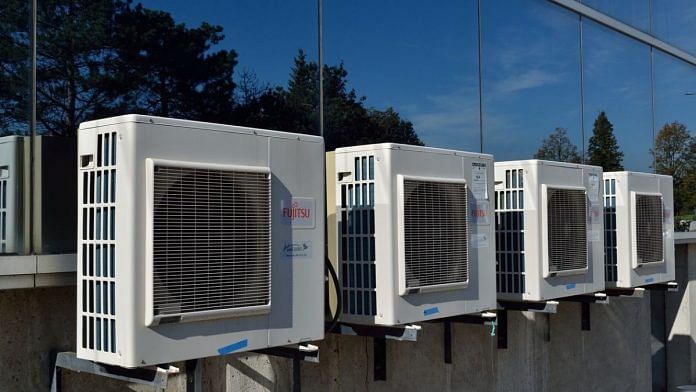New Delhi: As India battles severe heat waves due to climate change, a sustainable cooling strategy can not only help the country create jobs and reduce emissions but also open an investment opportunity of $1.6 trillion by 2040, said a new report by the World Bank.
The report titled ‘Climate Investment Opportunities in India’s Cooling Sector,’ is authored by Abhas K. Jha, practice manager, climate and disaster risk management, South Asia, and Mehul Jain, climate change specialist at the World Bank.
The report also says that by 2037 the demand for cooling equipment in India is likely to be eight times higher than current levels. There will be demand for a new air-conditioner every 15 seconds, leading to a 435 per cent rise in annual greenhouse gas emissions over the next two decades, it notes.
However, the study also says that much of India’s population may still not be able to afford cooling equipment. Around 35 million people are expected to face job cuts by 2030 due to decline in productivity caused by heat stress, the study claims.
“India’s cooling strategy can help save lives and livelihoods, reduce carbon emissions and simultaneously position India as a global hub for green cooling manufacturing. This report provides a roadmap that has the potential to reduce 300 million tons of carbon dioxide annually by 2040,” Auguste Tano Kouame, World Bank’s country director in India.
In 2019, the Centre had launched the India Cooling Action Plan (ICAP) for sustainable cooling measures across various sectors, including indoor cooling in buildings, and cold chain and refrigeration in agriculture and pharmaceuticals. The World Bank report works in tandem with ICAP, diversifying and exploring opportunities that tap into India’s cooling sector.
Also read: Toxic SO2 less in Indian air today due to environment rules & control tech, finds IIT study
Electricity demand from space cooling
The study says that by 2050, 45 per cent of India’s electricity demand is expected to come from space cooling in buildings alone. It notes that government efforts are required on a large scale to implement “thermal comfort for all”.
The study estimates that by 2040, sustainable space cooling methods can reduce over 200 million tons of carbon dioxide emissions annually.
The report also talks about the Pradhan Mantri Awas Yojana, an affordable housing programme, and how cooling techniques can be incorporated in it.
It further highlights the use of district cooling technology in the Gujarat International Finance Tec-City, more commonly known as GIFT City. In this mechanism, a central plant distributes cooling to multiple buildings via underground pipes. It is an effective way of bringing down costs for providing cooling to individual buildings. The report notes that it can reduce energy bills by at least 20-30 per cent.
Passenger transport cooling
The study also projects that energy consumption in the passenger transport air conditioning sector is expected to double over the next decade and quadruple by 2038. The passenger car air conditioning market in India is expected to surpass a billion dollars by next year.
The country’s automotive heating, ventilation and air conditioning market is projected to reach over $2 billion by 2026, the study claims.
It also states that improving efficiency of passenger transport air conditioning can result in 20 per cent energy savings. New vehicle designs and use of public transportation systems can further reduce cooling load and minimise emissions.
Optimising refrigeration market
The study finds that India’s annual refrigerant demand for cooling is expected to grow over six times, by the year 2038.
For effective phase down of ozone depleting hydrofluorocarbons, improvement in servicing, maintenance and disposal of equipment is needed, says the study. It can also lead to creation of two million jobs for technicians over the next 20 years, the study finds.
“We recommend these moves be accelerated by creating a flagship government mission to address the challenges and opportunities from rising temperatures in India,” say authors of the report.
Also read: Climate change deadlier than cancer, widening gap between haves, have-nots, says new UN study



